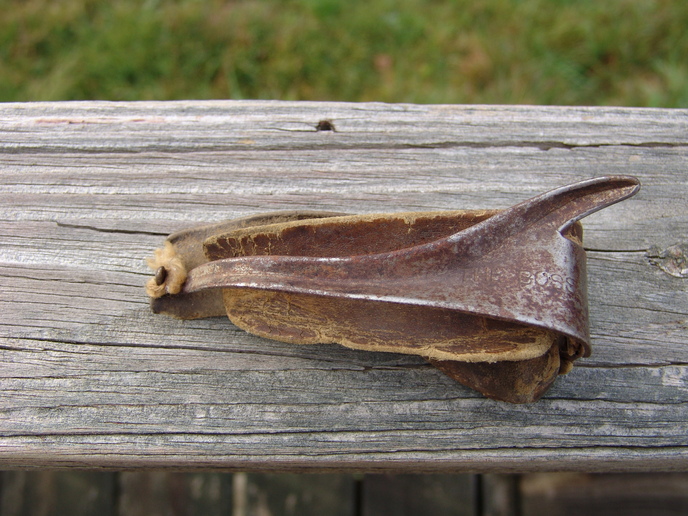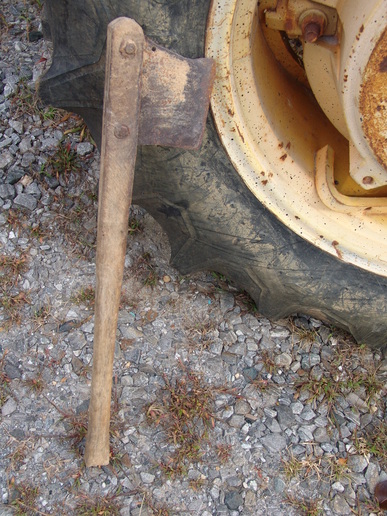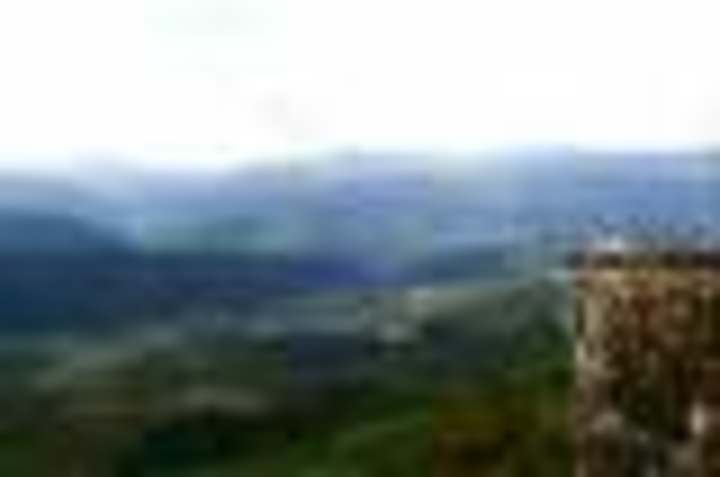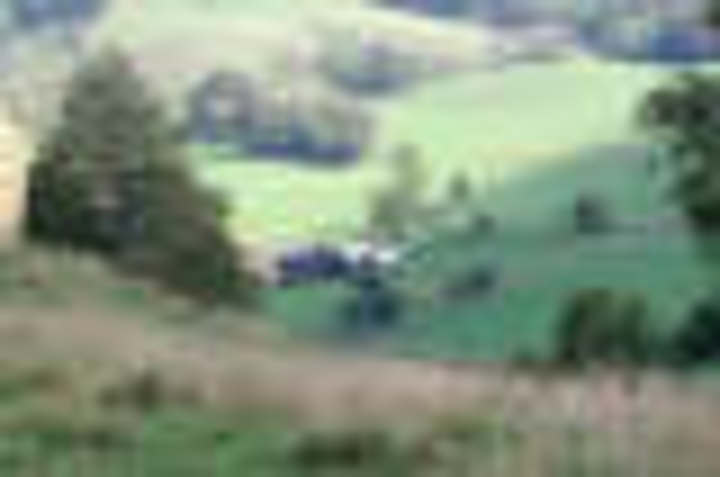I can barely remember shocked corn and it was hauled to the stationary cutter at the silo. Did you shock regular field corn and if you did what ws the purpose if it would stand in the field a long time anyway? Next question. How was the size of the bundle decided? Did the corn binder trip something after going a certian distance. or did the operater hit or kick someting to tie a bundle? Thanks
You are using an out of date browser. It may not display this or other websites correctly.
You should upgrade or use an alternative browser.
You should upgrade or use an alternative browser.
- Thread starter NEKS
- Start date
John Harmon
Member
I remember the shocking process was to further the drying of the corn to preserve the ears until they could later be removed for storage and the dry fodder was used as feed. I remember the dry stalks and fodder being chopped at the barn and blown into the dry mow to later be fed to the cattle and it also contributed some to the animal bedding.Green Shcks were brought to the ensilage cutter set up at the silo and were fed into the cutter and blown into the silo to make silage. So two processes were applied to shocked corn.Dryer corn being shocked to further dry down of the ears and the saving of the fodder for feed and bedding and the cutting of greener corn to make ensilage. I don't have any idea how the cutter bundled the stalks and tied them and then tripped it out for later shocking. It was a noisy machine and I was very young so it was and amazing thing to be around. Dad pulled it with a AC UC model tractor and I thought it was the prettiest Tractor in the neighborhood.
Anonymous-0
Well-known Member
Around here, at least, amish still make corn shocks. Corn left standing on its own til late in the season may break over and get buried in snow. Pulling ears off the stalks is "shucking", standing stalks together in tied bundles are shocks.
The corn binder cut the stalks, made a bundle and tied the bundle with twine, and discharged the bundle out the back on to the bundle carrier if it had one. The bundle carrier held enough bundles for one shock and the operator tripped the carrier to discharge them out of the way for the next round so as not to run over them with the outfit. The bundles were then placed in a shock, usually 8 to 10 bundles, and tied together near the top and left in the field to dry. Cutting with a binder usually started in late September. After drying, The shocks were torn down and hauled the the barn where the husker - shredder was used to husk the ears & shred the stalks & leaves for bedding or feed or both. The ears were elevated to a wagon. I do this every year with a John Deere binder pulled with a '35 John Deere A. This is LOTS of heavy hand labor. I also have a one row corn picker to finish with when I give out shocking. I'll post video on U-Tube later on.
The other guys posting here are also correct. My Great Grandad had a binder but no shredder. Dad, Grandpa & Great Grandpa would go out in the field and pull the ears by hand, then sit on the down wind side of the shock and husk the ears by hand with a " husking peg". That was a piece of leather that fit your hand with a metal hook riveted on that made it easier husk the ears. Now you are really up close and personal with every ear in the field. We didn't have have a "shredder" until Dad came back from the war. Going out and "tearing down" by hand was not one of his favorite jobs. Oh , they didn't get a tractor until '48. We still have the "Old Ford". I was about 4 or 5 when I was around to see the 2 roll IH in action. I've had to learn the rest from watching other folks, like the Amish around Sugar Creek Ohio, and reading, and trial & error. AND advise from the good folks here on YT. I'm 58 years old, born in '51. I am very lucky to have been old enough to remember my Great Grandad, Delbert Case, 1873-1958.
I remember well both method of handling corn as my father did both. First there was the corn binder which was pulled by a team of horses or on ome occastion three. It was sort of like the corn picker of today only it cut the corn off just above the ground and moved it in a standing position toward the back of the machine. They had what was called packers that pressed th stalks together to form the bundle. When the bundle was at a certain size it would hit a trip that would engage the knotter mechanism that would wrap a twine around the bundle and tie it and throw it out the back of the machine. If Dad was making silage the corn was cut green and then taken to the silo filler which cut it short pieces and blew it into the silo. Since the green corn was heavy the bundles were loaded on the wagaon laying flat. Like today the moisture content had to be right so it would ferment to make silage. It was never put in shocks.
Shocking corn was cut with the same machine only it had what was had a bundle carrier. This would hold a number of bundles and could be tripped by the operater to dump them in a pile. The corn was cut and bundled as it got dryer and when the cob was close to mature but he stalk still had most of its leaves. The bundles were placed in the shocks to dry. The bundles in the shock were haulded to the shredder standing up-right. At the shredder the bundles were fed through a set of rolls that snapped off the ears like a corn picker. The stock and leaves went thru a lawn mower type chopper and a blower that either piled or blew it into the barn. The ears of corn was elavated into a wagon and the shelled corn was shifted out seperate. I can remember as a boy hauling bundles to the shredder. The stover as it was called made good roughage for young stock and dry cow. Dad would always have one stack that was blown over a wire frame work to serve as protection for the cattle. In the bad days of winter the cattle could stay under the stack and eat and only went out for water. I guess I can say,"I have been there and done that".
gitrib
Shocking corn was cut with the same machine only it had what was had a bundle carrier. This would hold a number of bundles and could be tripped by the operater to dump them in a pile. The corn was cut and bundled as it got dryer and when the cob was close to mature but he stalk still had most of its leaves. The bundles were placed in the shocks to dry. The bundles in the shock were haulded to the shredder standing up-right. At the shredder the bundles were fed through a set of rolls that snapped off the ears like a corn picker. The stock and leaves went thru a lawn mower type chopper and a blower that either piled or blew it into the barn. The ears of corn was elavated into a wagon and the shelled corn was shifted out seperate. I can remember as a boy hauling bundles to the shredder. The stover as it was called made good roughage for young stock and dry cow. Dad would always have one stack that was blown over a wire frame work to serve as protection for the cattle. In the bad days of winter the cattle could stay under the stack and eat and only went out for water. I guess I can say,"I have been there and done that".
gitrib
DH in Carolina
Member
I grew up in the southwestern part of Virginia in the Clinch Mountians. We grew a little corn to feed the old milk cow and couple of hogs.
Where we grew corn you could not get a corn binder to stay on the side of the hill. You were lucky to get the land plowed with a team of horses. Corn was planted by hand, cut and shocked by hand, and pulled and shucked by hand. The fodder was fed to the cow along with some ear corn.
We would cut the corn by hand after the dew fell on it so as not to break the leaves off. It was tied in a bundle with a stalk of corn wrapped around 20-25 stalks. This bundle was placed in a shock with 10-12 other bundles left standing in the field. As the corn was needed for feed we would pull the ears and place in the corn crib. We only had two or three acres of corn because we had no large fields to grow it in. It was a lot of work but was a good life. DH


Where we grew corn you could not get a corn binder to stay on the side of the hill. You were lucky to get the land plowed with a team of horses. Corn was planted by hand, cut and shocked by hand, and pulled and shucked by hand. The fodder was fed to the cow along with some ear corn.
We would cut the corn by hand after the dew fell on it so as not to break the leaves off. It was tied in a bundle with a stalk of corn wrapped around 20-25 stalks. This bundle was placed in a shock with 10-12 other bundles left standing in the field. As the corn was needed for feed we would pull the ears and place in the corn crib. We only had two or three acres of corn because we had no large fields to grow it in. It was a lot of work but was a good life. DH


Here in Iowa the terms for picking corn are picking,shucking and husking. This is where just the ear was pulled off the stalk. Either by hand or with a machine.
When the whole stalk was cut from the ground and bundle together they were called shocks or shocking corn.
When the whole stalk is cut and chopped into little pieces it is called chopping silage or just plain chopping.
When using a tractor mounted picked to harvest just the kernals with no cob it was called picker-shelling.
Now we use a combine to harvest the kernals only and just call it combining corn.
What are your terms?
Gary
When the whole stalk was cut from the ground and bundle together they were called shocks or shocking corn.
When the whole stalk is cut and chopped into little pieces it is called chopping silage or just plain chopping.
When using a tractor mounted picked to harvest just the kernals with no cob it was called picker-shelling.
Now we use a combine to harvest the kernals only and just call it combining corn.
What are your terms?
Gary
Anonymous-0
Well-known Member
I was born in 1941 and saw a lot of this type of corn harvesting done as a small boy but what i rember most was all the one arm farmers around in thos days these old machines were easy to get into
greenbeanman in Kansas
Well-known Member
Same terminology used in Kansas. I have learned that shocks are also called stooks in certain parts of the country.
We cut cane (sorghum) with a grain binder. The binder has what you might compare to a baler chamber and can be set for different sizes. When the chamber gets full the bundle is tied and is kicked out.
If dad had help available and the cane wasn't too tall he would use a bundle carrier which was tripped by the binder operator after a certain number of bundles or when it was full.
In the linked photo you can see a few shocks and also the carrier dropped bundles awaiting shocking.
The farmer that owns that field often "tops" the grain from bundles but holding them up to the raised platform of a standing combine, machine running of course. That way he saves the grain separately from the fodder. Next years seed that way.
I still consider bundle feed some of the best there is but very labor intensive.
Shocked cane.
We cut cane (sorghum) with a grain binder. The binder has what you might compare to a baler chamber and can be set for different sizes. When the chamber gets full the bundle is tied and is kicked out.
If dad had help available and the cane wasn't too tall he would use a bundle carrier which was tripped by the binder operator after a certain number of bundles or when it was full.
In the linked photo you can see a few shocks and also the carrier dropped bundles awaiting shocking.
The farmer that owns that field often "tops" the grain from bundles but holding them up to the raised platform of a standing combine, machine running of course. That way he saves the grain separately from the fodder. Next years seed that way.
I still consider bundle feed some of the best there is but very labor intensive.
Shocked cane.
DH in Carolina
Member
Used it to cut off the corn stalks as you walked down the row. When you got all you could carry in the other arm, you tied the bundle. Also used the same knife to cut burly tobacco. DH
John Harmon
Member
Shucking is taking the ear from the husk, shocking is taking about 15 bundles of cut corn stalk along with the ears attached and standing these bundles in a tent formation with a simple piece of twine encircling them to form a shock or stook as the amish say.The primary reason for shocking corn is to save both the ears and the stalk/leaves as fodder for animal feed and bedding .I am sure in a time generations ago that the fodder also found use in human survival also. for mattress stuffing,insulation for their homes and other uses.
John Harmon
Member
I hate to be a nit picker but in my neighborhood more farmers lost arms,fingers ,hands and their lives on farmall M tractors with a 2m picker mounted on it. It was so easy to reach into the snapping rolls or the husking bed on these machines to grab a rock which was bouncing around in these area so it could be got rid of or to rach in and unplug a spot where stalks or grass were dreating a problem.Yes those old pickers would grab a rock if it was in the row and if you were lucky it would go on thru the machine and end up in the flare box or hopefully on the ground.My dad never did own a corn picker . He always hired some one to pick the 20 or 30 acres of standing corn after silo filling. We had 4 silos,2 16'x50' and 2 30'x 70'.The 2 older ones could be filled in a day apiece but the 2 big ones took a lot of corn to fill them. They were mfg. by a company in Janesville Wisc. as I remember.
John Harmon
Member
This is where my GGGGrand Father was raised in the shadow of Peaked Mt. in the Harman Hills area of Pendleton Co. W.Va.In those days it was part of Va. He and several of his brothers left Va. for the new grounds of Adair County Ky. in 1805 and the rest of the story is very interesting History.I myself was born just 5 miles away from where my dad,granddad,ggranddad were all born and where my GGGGrand parents were granted land along the watershed of the green river in central Ky.






I remember being 4 years old and carrying the twine pail for dad as he shocked corn bundles. He used a rope with a harness ring on one end. He would prop up the corn bundles, then swing that ring on a rope like a lasso, it coming around the shock where he could grab it and cinch the shock tightly. Then the wrap or two of twine tied it up neatly. Boring, cold, windy, but I was with my dad, not little sister! Blowing the shredder output was a no no for land owners, as they believed the dust/trash that stuck in the roof boards caused rot in leak areas.
farmerjohn
Well-known Member
I thought oats "shocks" were called sheeves.
The individual bundles were called sheaves and with corn just as far as I know just called bundles. 50 years since we cut corn but I still have the John Deere corn binder that my Mom's Dad had orignally then sold to my Dad's Dad. The toung truck is long gone and we pulled it with a 1944 2N Ford Dad bought new in May of 1944 along with the orignal 2-12" Ferguson Plow. I also have the New Idea 4 roll shreader and we ran it with a 1941 Farmall H or a 1938 A John Deere. The foder was blown in the barn and fed to the milking cows in the evening with what they did not eat going out for bedding the next morning and getting hay in the morning. Both the shreader and corn binder with a little cleaning would be ready to go to work and the binder always had the bundle carrier and it deposited the bundles far enough to the side they were out of the way for the next round. Never made silage but they did make wagon loader bundle carrier for making silage and you never had to pick the bundles up off the ground. They also made a soybean attachment for the corn binder and a second string knotter for different size corn stalks.
Similar threads
- Replies
- 27
- Views
- 3K
We sell tractor parts! We have the parts you need to repair your tractor - the right parts. Our low prices and years of research make us your best choice when you need parts. Shop Online Today.
Copyright © 1997-2024 Yesterday's Tractor Co.
All Rights Reserved. Reproduction of any part of this website, including design and content, without written permission is strictly prohibited. Trade Marks and Trade Names contained and used in this Website are those of others, and are used in this Website in a descriptive sense to refer to the products of others. Use of this Web site constitutes acceptance of our User Agreement and Privacy Policy TRADEMARK DISCLAIMER: Tradenames and Trademarks referred to within Yesterday's Tractor Co. products and within the Yesterday's Tractor Co. websites are the property of their respective trademark holders. None of these trademark holders are affiliated with Yesterday's Tractor Co., our products, or our website nor are we sponsored by them. John Deere and its logos are the registered trademarks of the John Deere Corporation. Agco, Agco Allis, White, Massey Ferguson and their logos are the registered trademarks of AGCO Corporation. Case, Case-IH, Farmall, International Harvester, New Holland and their logos are registered trademarks of CNH Global N.V.
Yesterday's Tractors - Antique Tractor Headquarters
Website Accessibility Policy

